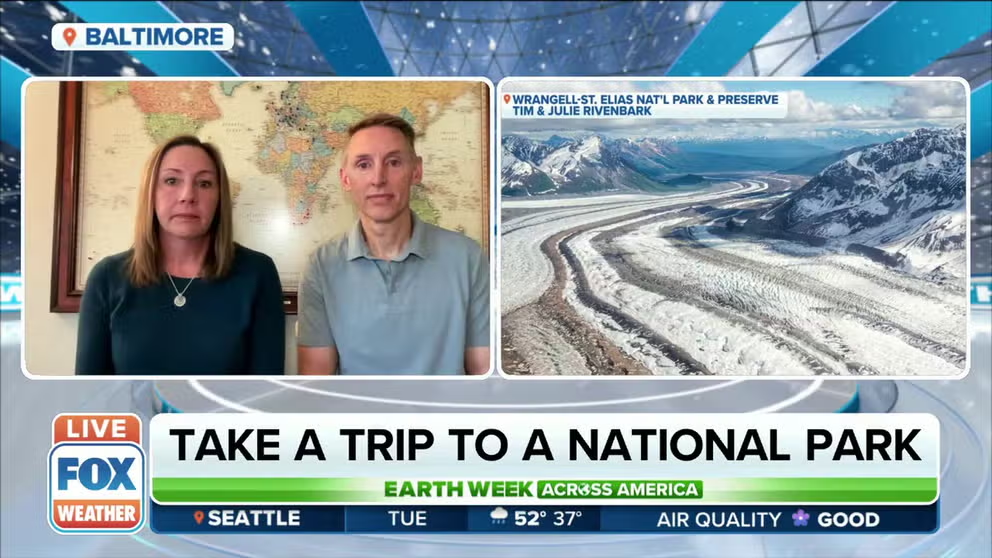See the extreme weather visitors at national parks experience
Around 300 million visitors travel to national parks each year. The warmest park is Death Valley National Park in California and the coldest is in Alaska. The most visited park site is the Great Smoky Mountains National Park.
National Parks to visit the public may not know about
Tim and Julie Rivenbark, bloggers at Earth Trekkers, tell us about some national parks that people should visit that the public may not know about.
Around 300 million visitors travel to national parks each year across the country and experience weather extremes from snow and dangerous cold to record heat and hurricanes.
America’s national parks see it all, and during an average year, a temperature spread of 170 °F from the coldest to the warmest park is common.
To experience the full scope of what Mother Nature has to over, you’ll have to deviate from the common path and adventure out to some of the lesser-known parks.
Here are some weather extremes you might experience during a visit to America's prized lands.
Warmest national park
The site of America’s warmest national park is also the driest.
Temperatures during the summer months at Death Valley National Park often top 120 °F, and sometimes overnight lows don’t even get out of the 90s.
Back on July 10, 1913, a section of the park reached the hottest temperature ever recorded on Earth at 134 °F.
The National Park Service says Death Valley averages less than two inches a year due to the terrain that surrounds Southern California.
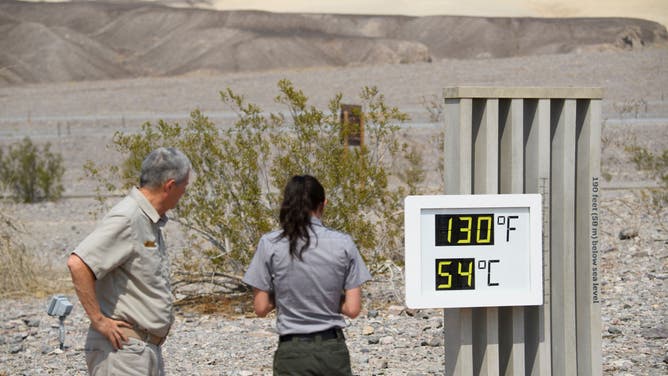
Park staff takes pictures of a thermometer display showing 130 Degrees Fahrenheit (54 Degrees Celsius) at the Furnace Creek Visitor's Center at Death Valley National Park on June 17, 2021, in Furnace Creek, California.
(Photo by Patrick T. FALLON / AFP / Getty Images)
Rangers say four major mountain ranges between Death Valley and the Pacific Ocean take a lot of the moisture out of the air as storm systems move from west to east across the state.
This leads to a significant rainshadow effect that impacts vast areas of the Desert Southwest.
Despite the extremes, the park, located about 130 miles outside Las Vegas, is gaining in popularity.
NPS statistics show the yearly visitor count is approaching 2 million people.
HOW TO WATCH FOX WEATHER ON TV
Coldest National Park
Gates of the Arctic National Park and Preserve ranks as the coldest and northernmost park in the country.
The entire park lies north of the Arctic Circle, where it is common to get temperatures well below zero.
The NPS says temperatures typically range from 0 ºF to -50 ºF during the winter.
The northern latitude of the nearly 8.5-million-acre park also makes it a great spot to see the Northern Lights.
Its rural location makes it one of the least visited parks, with an average visitor count of less than 10,000 people each year.
THE DAY THE NORTHERN LIGHTS COVERED THE PLANET
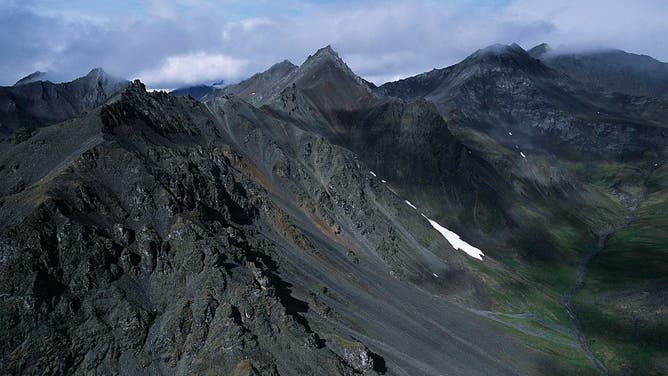
Gates of the Arctic National Park, mountain landscape.
(Photo By DEA / M. SANTINI/De Agostini via Getty Images / Getty Images)
Snowiest national park
If you are trying to find the park with the most snowfall each year, look no further than Mount Rainier National Park in the state of Washington.
Due to the annual parade of storms in the Pacific Northwest, the park averages 53.2 feet of snow each year.
Because of the heavy snow, some parts of the park are inaccessible and close during the late fall and do not reopen until early summer.
The NPS says most of the park is snow-free from mid-July through late September.
Mount Rainier is the highest peak in the Cascade Range and stands approximately 14,410 feet above sea level.
The park service says 9,138 people attempted to climb Mount Rainier in 2021, and only about half the hikers reached the summit.
WHEN CAN YOU EXPECT THE LAST SNOW OF THE SEASON
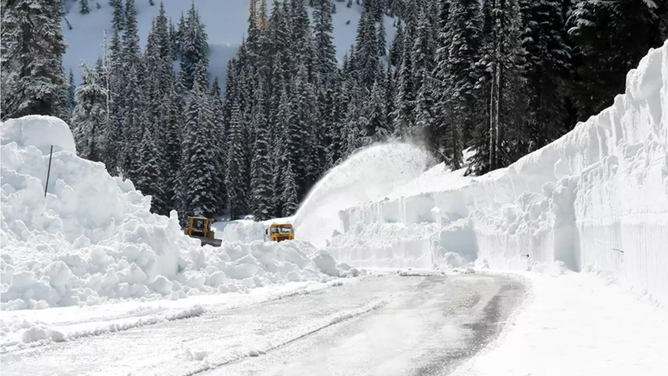
The Paradise area at Mount Rainier is known for its snowfall.
(National Park Service)
Rainiest national park
In addition to being the home of the snowiest park, the state of Washington has the rainiest national park in the country.
Park rangers say that parts of Olympic National Park see nearly 12 feet of rain a year.
Like Mount Rainier, the Olympic Peninsula is heavily influenced by storm systems that move in from the Pacific Ocean.
Because of all the rain, visitors can find several temperate rain forests in the park.
The winter and fall seasons tend to be the rainiest.
Rangers advise visitors always to have a waterproof jacket and pants available no matter what time of year.

WASHINGTON, UNITED STATES - 2021/09/08: View of Sol Duc Falls on the Olympic Peninsula in the Olympic National Park in Washington State, USA.
(Photo by Wolfgang Kaehler/LightRocket via Getty Images / Getty Images)
Windiest national park
Not only is Alaska home to some of the coldest parks in the country, but it is also the state with the windiest.
Denali, previously known as Mount McKinley, is the highest peak in North America and with the high terrain comes wind that commonly tops 100 mph.
The south-central Alaskan mountain stands at 20,310 feet.
President Barack Obama restored the name Denali to the mountain in 2015, a move that Alaskans worked on for decades.
Denali is from a native Alaskan language that means "the tall one."
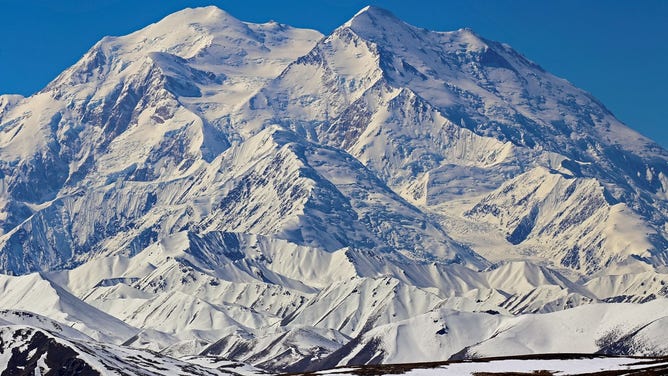
Denali is the highest peak in North America.
(National Park Service)
Most earthquake-prone
Believe it or not, Yellowstone National Park in Wyoming is one of the most seismically active areas in the country, with thousands of earthquakes each year.
The U.S. Geological Survey says many of the earthquakes are too small to be felt, but occasionally some have been large, like a 7.3 magnitude earthquake that happened back in 1959.
Experts say Earth’s natural plate movements keep Yellowstone seismically active, but it is a good problem to have.
With earthquakes releasing energy below the surface, geysers in the park are naturally managed and cuts down on the chances of a massive eruption.
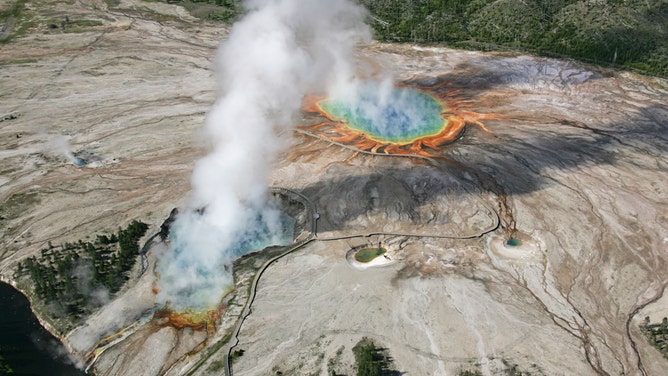
An aerial photograph of Excelsior Geyser and Grand Prismatic Spring in the Midway Geyser Basin, Yellowstone National Park, Wyoming.
(Photo via Smith Collection/Gado/Getty Image / Getty Images)
Most hurricane-prone
Since the mid-1800s, more than 117 tropical cyclones have passed within 80 miles of the Dry Tortugas, located about 70 miles west of Key West, Florida.
The impressive list of storms to impact the area includes 18 major hurricanes, with names such as Irma, Wilma, Charley and Andrew.

Paths of tropical cyclones from the mid-1800s until 2021
(National Hurricane Center)
It’s believed Juan Ponce de Leon discovered the unique islands in 1513, but it wasn’t until 1846 that the U.S. Navy started building a fort to protect the Florida coastline.
The Dry Tortugas National Park wasn’t established until 1992 and is only accessible by boat or seaplane.
Because of its unique location, the Gulf of Mexico’s loop current provides plenty of warm water year-round that tropical systems take advantage of to help fuel their thunderstorm activity.
If you are taking a trip to the Dry Tortugas, you may see damage from past hurricanes around the park’s Fort Jefferson.
The NPS is developing a plan to repair to damage left behind when Hurricane Irma passed not far away from the island chain in 2017.
HERE ARE THE NAMES YOU’LL SEE DURING THE 2022 ATLANTIC HURRICANE SEASON
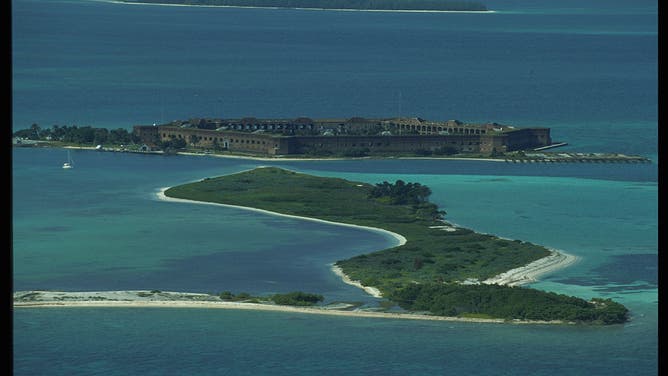
In the distance, Fort Jefferson stands on Garden Key. Intended as a fort when it was built in 1846, it served only as a prison until it closed in 1874. Dry Tortugas National Park was formed to preserve the area. Dry Tortugas, Florida, USA. | Location: Dry Tortugas, Florida Keys, Florida, USA.
(Photo by Philip Gould/Corbis via Getty Images / Getty Images)
